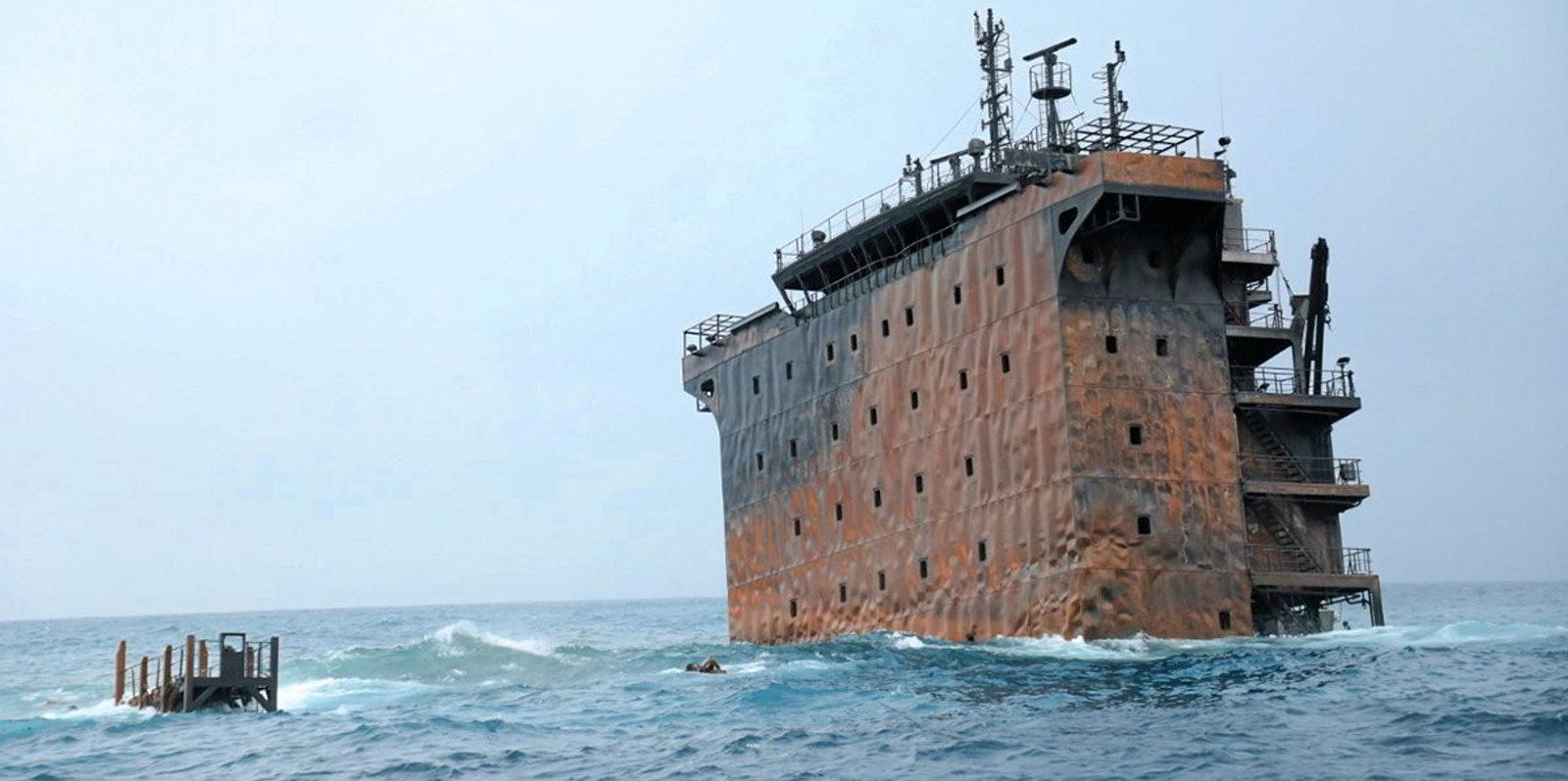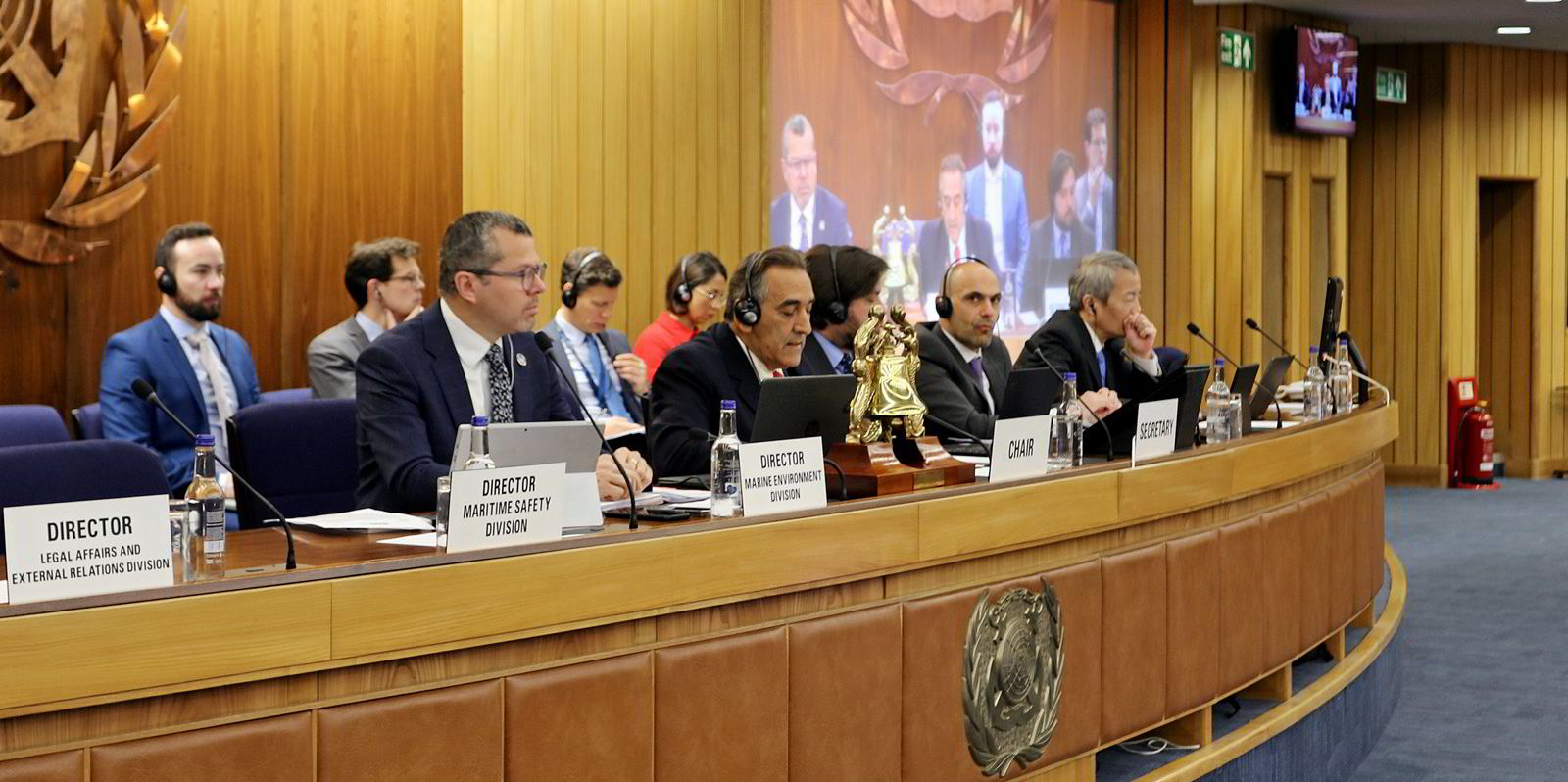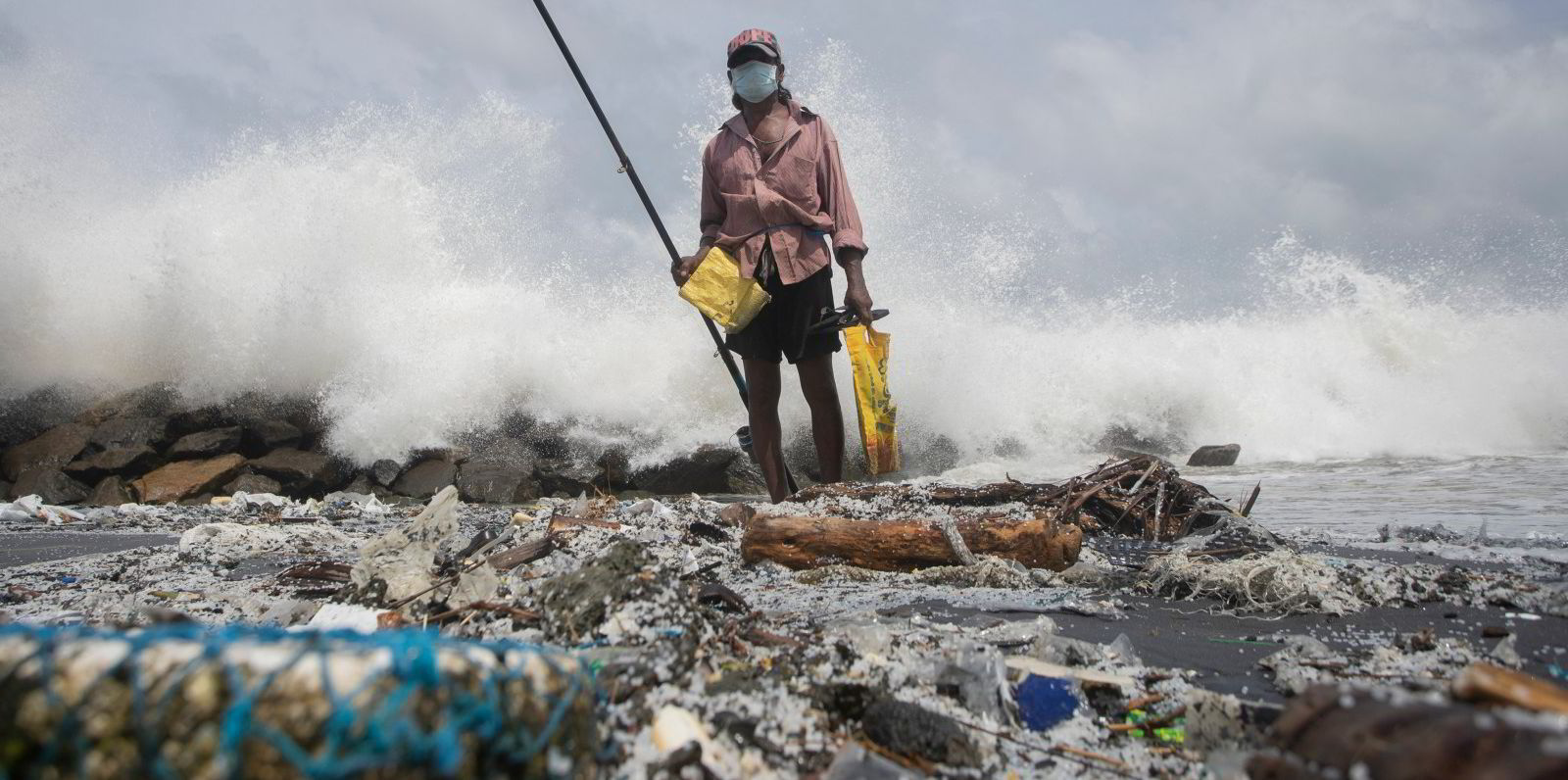The International Maritime Organization is holding key meetings this week to chart a course towards tackling plastics pollution from vessels.
Key on the agenda for the Sub-Committee on Pollution Prevention and Response is nurdles, the plastic pellets also known as “mermaid tears”, that can spill from container ships. Two major incidents this year have highlighted the issue.
Also in the discussion is a debate over the role that lost gear from the fishing industry has played in contributing to the problem of plastics pollution at sea, and a submission by Norway’s delegation has provided insight into microplastics from ships’ paint.

Ahead of the meeting, environmental group Fauna & Flora launched a petition urging the IMO to classify nurdles as a maritime pollutant at the July meeting of its Marine Environment Protection Committee (MEPC).
Nurdles are lentil-sized pellets that are the building blocks for plastic products. Packed with chemicals, they are often mistaken for food by marine life and can break down into smaller microplastics.
“Pellet pollution is persistent and it’s problematic,” Fauna & Flora senior technical specialist Tanya Cox told Green Seas during a break in the discussions. “Prevention absolutely is key, and this can be a preventable problem.”
She said there is a consensus at the IMO on the need for mandatory measures to tackle the problem. The marine plastics specialist said Fauna & Flora would like to see a circular on preventing nurdles pollution issued by an MEPC meeting planned for 2024, when the group hopes the committee will adopt new mandatory rules.
But discussion remains about what technical instrument the IMO should adopt to pursue mandatory rules.
Don’t delay
“I would like to urge all members to not delay in moving forward in identifying the most appropriate regulatory instrument,” Cox said. “I don’t want members to lose momentum because there is uncertainty on how to proceed.”
As a sign of the growing consensus around the topic, the World Shipping Council joined the International Chamber of Shipping and Norway’s delegation in calling for plastic pellets to be classified as a marine pollutant, which would lead to stowage requirements.

Bryan Wood-Thomas, the container shipping industry group’s vice president for environmental policy, told the pollution subcommittee that member companies carry plastic pellet cargoes and are “acutely aware” of the problem.
“Recognising the nature and scope of the plastic pellet problem, the needed solutions require fundamental changes that alter storage, handling and transportation norms across multiple modes and sectors,” he said at the IMO on Tuesday.
“Marine accidents resulting in losses of plastic pallets clearly warrant explicit action in this organisation.”
This year alone, nurdles have washed up on the shores of Brittany in France and Sunset Beach in California, with container ships believed to be the source.
In a high-profile instance of plastic pellet pollution, 11,000 tonnes of nurdles were spilled when the 2,756-teu container ship X-Press Pearl (built 2021) caught fire and sank off Sri Lanka in 2021.
Thailand’s IMO representative said more attention should be given to the root cause of the pollution, and he said classifying nurdles as dangerous goods will not achieve that.
“The development of measures should pay more attention to stringent measures to prevent freight containers from being released at sea,” he said.
Fishing gear
The pollution subcommittee is also debating measures to tackle another source of plastics pollution at sea: fishing gear.
The panel has been working on draft amendments to the International Convention for the Prevention of Pollution from Ships (Marpol) to require reporting of lost fishing gear, as well as rules on marking gear to help identify the problem.

Norway’s delegation has proposed more measures, including improved daily routines for handling fishing gear, such as keeping it secured onboard so it is not washed to sea in bad weather, regular checks and maintenance, and ensuring parts of equipment do not end up at sea after maintenance, repair or replacement.
“International guidance for developing such a management plan should be elaborated. Such guidance should be flexible enough to take into account regional differences in fisheries and help fishing vessels prepare workable and meaningful plans,” Oslo’s delegation said in a submission to the IMO.
IMO can’t do it alone
“However, marine litter originating from fishing activities cannot be managed by the international requirements adopted by IMO alone. More holistic approaches involving also other maritime organisations and administrations beyond maritime at national and regional levels would be required from the relevant parties to combat the problem of marine pollution linked to fishing.”
Another focus of pollution at sea has been the anti-fouling paints on ships that are a source of microplastics.

Norway’s delegation submitted a study commissioned by its maritime authority and carried out by classification society DNV that showed microplastics from anti-fouling paints on ships amount to just 6,900 tonnes per year, out of 4.6m to 12.7m tonnes of plastics released annually into the ocean from all sources worldwide.
“The percentage for discharge from ship anti-fouling paint seems low,” Norway said in its submission. “However, it is still a contributor, and the plastic will over the years accumulate in the oceans if no measures are implemented.”
________________
Podcast: Should LNG stay on the alternative fuels menu for shipping?
Touting carbon reductions as a benefit of using LNG as a marine fuel is facing growing criticism from environmental groups about the flip side of natural gas: methane emissions.
The green groups are increasingly urging shipping to stay away from LNG because methane is its main ingredient and has a way of leaking into the atmosphere, both from ships and upstream in the fuel’s supply chain.
But shipping participants contend that strides are being made in reducing methane slip on board vessels, in addition to regulatory and energy initiatives that will provide a clearer picture of the upstream impact.
________________
Token power: Insetting allows shipping companies to take emissions cuts beyond customer base
When shipowner Niels Stolt-Nielsen complained publicly that his Stolt Tankers cannot order new vessels unless its customers pay higher rates for them, Jeroen van Heiningen saw a dilemma faced by ship operators that want to invest in greener fuels.
How can ship operators invest in costlier fuel if their customers do not want to pay for it?
Van Heiningen is founder and managing director of 123Carbon, the Netherlands-based climate tech company that has signed up with Norden to allow the Danish operator to sell carbon insetting tokens representing the emissions cuts on its voyages that use biofuels.
If one shipper, for example, has a cargo on a route for which biofuels are available but does not want to pay extra for a greener voyage, carbon insetting tokens allow a shipping company to sell the carbon cuts to another customer.
But van Heiningen said an operator selling carbon inset tokens can do more.
“They also can go above and beyond their current customer base and find customers that are seeking decarbonisation and do business with them,” he said. “So it allows them an alternative channel to allocate these additional costs to potential customers.”
________________
‘Unprecedented challenge’: Shipping braces for an ESG disclosure tsunami
When environmental, social and governance (ESG) advisory and data company Position Green Group analysed the work that one client faced with a new set of disclosure requirements, it expected to find some gaps, but not many.
After all, the Swedish customer already had strong sustainability credentials.
But this exercise was not to carry out your everyday ESG report.
This “double materiality assessment” was to prepare for the draft standards of the European Union’s Corporate Sustainability Reporting Directive, a looming regulation whose rules are scheduled to be finalised in June.
“This company right now was meeting 30% of the required disclosure requirements,” says Amelie Huart, a manager at Position Green. “So it’s fair to say that this exercise will be challenging, no matter what company you are in, no matter what industry you’re in.”
A patchwork of new or looming regulatory mandates on disclosing ESG factors is presenting a growing challenge to shipping companies, as well as other industries, around the world.
The EU requirements will join a spate of global ESG reporting rules that have a particular focus on carbon.




